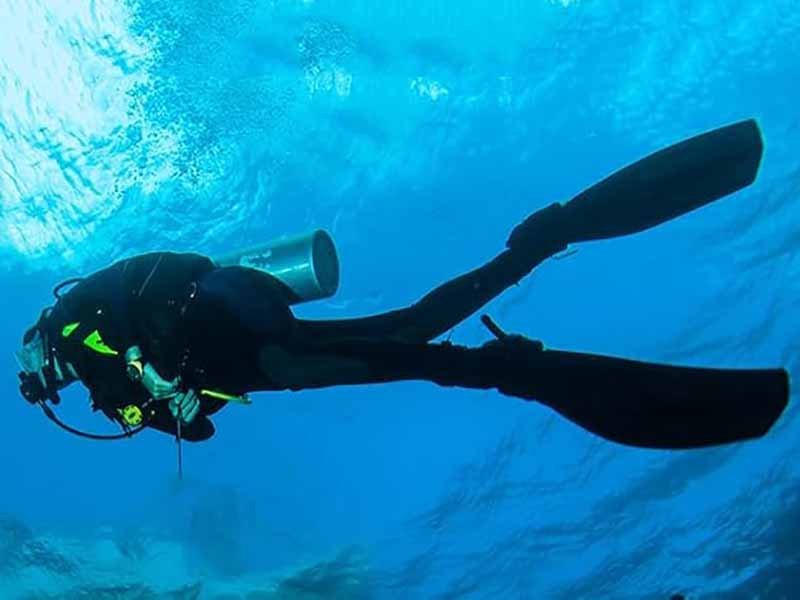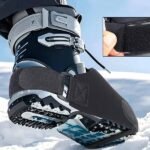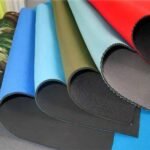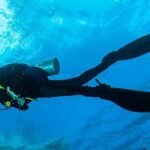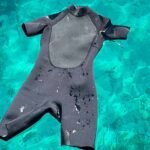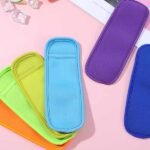The ocean is a beautiful contradiction—freedom and danger, warmth and cold, adventure and endurance. A wetsuit sits right in the middle of that contradiction. It’s the quiet technology that allows surfers, divers, triathletes, and rescue teams to stay comfortable and protected when the environment is anything but forgiving.
A wetsuit is used to keep the body warm, buoyant, and protected during water activities such as surfing, diving, swimming, and rescue operations. Made primarily from neoprene foam, it traps a thin layer of water that’s warmed by body heat, preventing heat loss and providing flexibility. Modern wetsuits also offer UV protection, abrasion resistance, and brand customization for sports and commercial use.
Imagine plunging into fifty-degree water off the California coast. Without a wetsuit, that shock hits like electricity—your muscles tense, breath shortens, focus collapses. Slip into a 3 mm neoprene suit, and the story changes: you stay warm, agile, and confident. That’s the difference this unassuming piece of gear makes.
Wetsuits were once simple rubber shells, but in 2025 they’ve become an intersection of material science, thermal physics, and design innovation. They’re not just for extreme athletes anymore—photographers, marine researchers, lifeguards, and even eco-tour operators rely on wetsuits every day.
Behind every good wetsuit is even better engineering: precision-cut neoprene panels, sealed seams, hydrophobic coatings, and ergonomic shaping. These are details that dictate whether the user remembers their dive as a thrill—or a chill.
Why This Topic Matters Now
Searches for “best wetsuits for cold water” and “custom neoprene gear” have doubled in the past two years. Buyers no longer want generic gear—they want products that express identity and meet technical expectations. That’s why understanding what wetsuits are really used for is the first step toward designing better ones.
In this guide, we’ll explore not just the science of wetsuits but also how customization, thickness, and manufacturing choices shape performance and brand value. By the end, you’ll know exactly how to specify, source, and scale a wetsuit collection that performs as good as it looks.
What Is a Wetsuit?
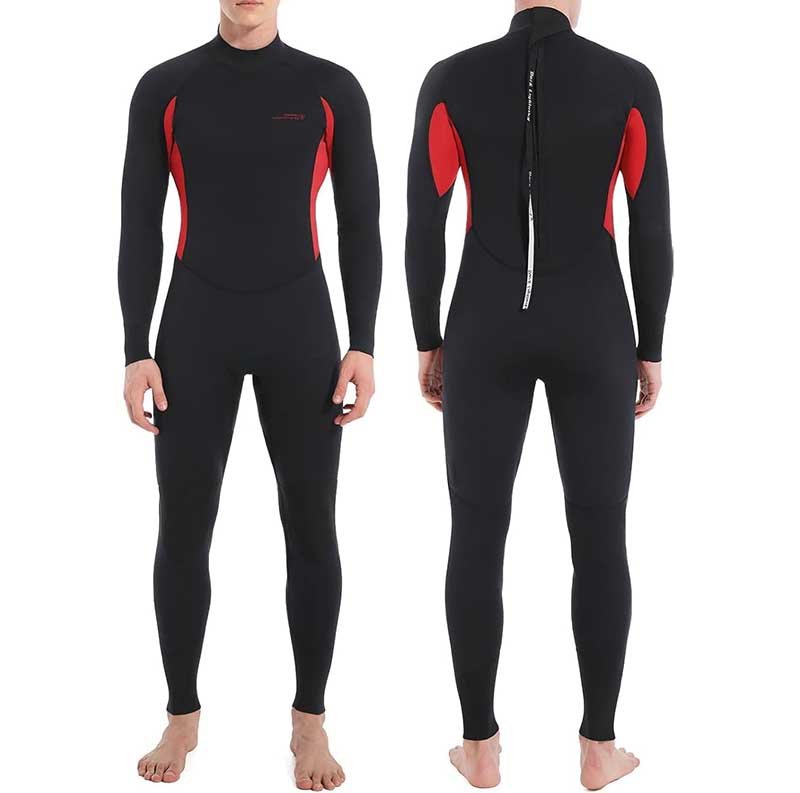
A wetsuit is a close-fitting garment made of neoprene foam designed to keep the wearer warm and buoyant in cold water. It traps a thin layer of water between the body and the suit; this layer heats up from body temperature and acts as insulation. The neoprene’s flexible, closed-cell structure also resists compression, adds buoyancy, and protects against abrasion, making it essential for diving, surfing, swimming, and other aquatic activities.
Understanding the Basics
At its core, a wetsuit is a simple concept executed with precision: it uses material thickness and structure to trap heat, allowing the human body to function safely in cold or variable water conditions. But behind this simplicity lies decades of refinement—each panel, seam, and millimeter of neoprene has a specific role.
When someone slips into a wetsuit, they’re actually wearing a personal thermal micro-environment. Instead of keeping water out completely, the neoprene’s closed-cell foam traps a small layer of water next to the skin. The body warms this layer, and because neoprene slows heat transfer, the warmth stays.
That’s the basic physics behind the comfort surfers, divers, and swimmers experience in cold oceans, rivers, or lakes.
The Construction: A Layered Engineering Approach
Most wetsuits are built using laminated neoprene sheets—rubber foam sandwiched between fabric layers. The fabrics add durability, color, and stretch; the foam adds insulation and buoyancy.
| Layer | Material | Function |
|---|---|---|
| Outer Fabric | Nylon, Polyester, or Lycra | Provides UV resistance, tear strength, and color design |
| Middle Core | Closed-cell Neoprene Foam | Maintains warmth, buoyancy, and flexibility |
| Inner Lining | Plush, Thermal Knit, or Titanium Coating | Enhances comfort, quick drying, and infrared heat reflection |
Every manufacturer tweaks these layers slightly—using different fabric weaves, foam densities, or coatings to suit the end use. High-performance diving wetsuits often use smooth-skin neoprene on the exterior to reduce drag underwater, while surfing wetsuits favor double-lined fabric for better stretch and durability.
The Role of Neoprene Foam
Neoprene (polychloroprene) was developed in the 1930s, but the wetsuit revolution began in the 1950s when Hugh Bradner at UC Berkeley realized its insulation potential. Neoprene foam contains thousands of nitrogen-filled microcells that trap heat and resist water pressure.
Modern variations—like SBR, CR, or Limestone-based neoprene—provide different balances of flexibility, compression resistance, and environmental impact. For instance:
| Type | Origin | Key Traits |
|---|---|---|
| CR (Chloroprene Rubber) | Petroleum-based | Excellent insulation, higher cost |
| SBR (Styrene-Butadiene Rubber) | Synthetic blend | Strong adhesion, good elasticity, cost-efficient |
| Limestone Neoprene | Mineral-based | Eco-friendly, light, consistent cell density |
High-strength SBR composites, used in advanced seam-taping wetsuits, offer both mechanical durability and thermal reliability—a balance many brands seek for scalable, mid- to high-end production.
Seam Construction: The Hidden Art of Comfort
The difference between a good wetsuit and a great one often comes down to how panels are joined. Modern designs use several methods:
- Flatlock Stitching – durable and flexible, ideal for warm-water suits
- Blindstitch + Glued Seams – watertight, used in mid- to high-end suits
- Seam Taping – adds a heat-sealed barrier inside or outside seams
- Liquid Sealing – a silicone-like coating over stitches for zero leakage
Each technique has trade-offs between flexibility, waterproofing, and cost. For example, flatlock seams breathe better but let water in, while taped seams improve waterproofing but require advanced heat-press equipment—something few small factories master consistently.
Thickness and Paneling: Balancing Warmth and Mobility
Neoprene thickness determines how warm and flexible the suit feels. A typical wetsuit uses different thicknesses for different body areas—thicker panels over the torso for warmth, thinner ones at arms and knees for mobility.
| Neoprene Thickness (mm) | Water Temperature (°F) | Common Use |
|---|---|---|
| 1–2 mm | 75–85°F | Warm-water surfing, swimming |
| 3 mm | 65–75°F | General-purpose suit |
| 4–5 mm | 55–65°F | Cold-water surfing or diving |
| 6+ mm | Below 55°F | Deep diving, polar conditions |
Modern cutting machines and 3D pattern design software have made this balance far more precise. Top factories can now digitally map body curves, reducing unnecessary tension and ensuring that neoprene stretches exactly where needed.
Beyond the Basics: Comfort, Fit, and Function
A wetsuit’s effectiveness depends not just on material but also on fit. Too loose, and cold water flushes through; too tight, and mobility and breathing suffer. Manufacturers consider hundreds of body shapes when creating size ranges.
Custom or semi-custom sizing is especially popular among private-label brands that target premium markets, where every suit feels “tailored.”
Modern linings enhance user experience even further. Fleece-like brushed linings dry faster, while titanium-coated linings reflect body heat—small upgrades that make big differences in perceived warmth and brand reputation.
Innovation Snapshot: Where the Industry Is Heading
The latest generation of wetsuits integrates multi-material panels, laser-cut venting, and even AI-optimized ergonomic mapping. The focus has shifted from just keeping the user warm to enhancing overall performance—reducing drag, increasing oxygen efficiency, and adding sustainable materials to the mix.
Eco-friendly initiatives like recycled nylon yarns, bio-based SBR, and water-based adhesives are gradually replacing traditional petroleum derivatives, marking a new era of responsible production without compromising quality.
Why This Definition Matters to Buyers
Understanding what a wetsuit truly is—beyond a rubber shell—is essential for buyers developing their own product lines.
A well-informed specification can mean:
- Fewer returns due to poor fit or seam failure
- Stronger brand differentiation through material storytelling
- Higher customer satisfaction and repeat sales
In short, the better you understand the engineering, the easier it is to design a product your customers will actually love—and keep buying.
What Are Wetsuits Used For?
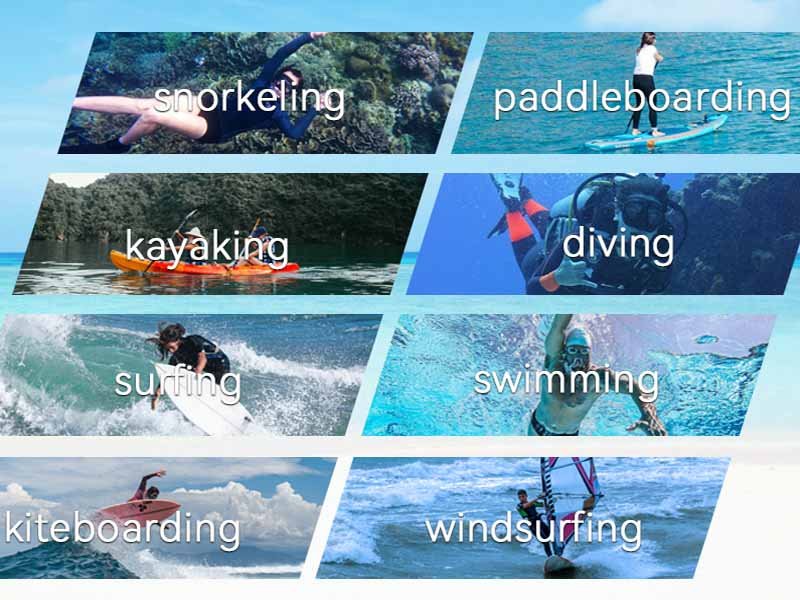
Wetsuits are used to provide warmth, buoyancy, and skin protection in cold or variable water conditions. They are essential for activities such as surfing, scuba diving, free diving, triathlons, sailing, kayaking, and marine rescue. By trapping a thin layer of water and maintaining body temperature, neoprene wetsuits help users stay comfortable and safe in extended water exposure — a critical advantage for athletes, professionals, and ocean explorers alike.
The Core Function: Warmth, Protection, and Performance
At the most basic level, a wetsuit’s job is simple: keep you warm and moving freely in environments where water would otherwise drain your body heat within minutes. But in real life, wetsuits serve multiple roles depending on the user — and each role influences how the suit is designed and manufactured.
Surfers prioritize flexibility. Divers care about thermal insulation and compression resistance. Lifeguards and rescue professionals need high visibility and abrasion protection. The right wetsuit becomes a bridge between survival and comfort, between endurance and efficiency.
1. Surfing and Water Sports
Surfing remains the biggest driver of wetsuit demand worldwide. According to the Global Surf Industry Report (2025), over 60% of wetsuit sales come from surf-related use.
- Purpose: Maintain warmth in cold surf zones and prevent rashes from boards.
- Design Focus: Flexibility, lightweight foam, fast-dry lining, and panel stretch zoning.
- Preferred Material: SBR or limestone neoprene with 3/2 mm or 4/3 mm thickness.
| Region | Common Water Temp (°F) | Typical Wetsuit Thickness | User Profile |
|---|---|---|---|
| California | 58–65 | 3/2 mm | Daily surfers |
| Australia | 65–75 | 2/2 mm | Seasonal surfers |
| UK / Europe | 50–60 | 4/3 – 5/4 mm | Cold-water surfers |
| Japan / Korea | 55–65 | 4/3 mm | Year-round surf schools |
Modern surf suits use double-lined neoprene for flexibility and durability, plus seam taping for long-term waterproofing — an area where high-strength SBR materials excel.
Insight: Most surf brands now request custom logos or private labeling on shoulder panels, sleeves, or chest areas — blending brand visibility with performance aesthetics.
2. Diving and Freediving
For diving applications, wetsuits are about more than comfort; they’re about thermal protection and survival under pressure. The deeper the dive, the more water pressure compresses neoprene cells, reducing insulation. That’s why divers often choose thicker suits — 5 mm, 7 mm, or more.
| Dive Type | Temperature Range (°F) | Recommended Suit Type |
|---|---|---|
| Shallow Reef Diving | 70–85 | 3 mm shorty |
| Cold-Water Diving | 45–65 | 5–7 mm full suit |
| Deep Diving (technical) | 35–55 | Semi-dry or dry suit |
| Freediving | Variable | Smooth-skin exterior for hydrodynamics |
Freedivers, in particular, rely on ultra-stretch neoprene for mobility and minimal drag. Smooth-skin SBR or CR suits create less water resistance and glide through the ocean effortlessly. Some professional freedivers even choose custom-cut suits for millimeter precision — something that’s easier to achieve when working directly with a factory capable of digital pattern cutting.
3. Triathlons and Open-Water Swimming
Triathlon wetsuits have their own logic: they’re not for warmth alone but for speed and hydrodynamics. These suits feature thinner shoulder panels, buoyant chest zones, and special surface coatings that reduce drag.
The performance benefit is measurable: studies from Triathlon Research Journal (2024) show that a properly fitted wetsuit can increase swim speed by 3–5% while reducing fatigue.
High-end manufacturers use nano-smooth SBR coatings and laser-sealed seams for maximum efficiency — techniques that require precision lamination and automated taping equipment.
4. Rescue, Lifeguard, and Industrial Use
Beyond recreation, wetsuits play a vital role in rescue operations, military training, and marine industry work. These suits must withstand extended wear, contact with equipment, and potential chemical exposure.
Typical design requirements include:
- Bright colors (red, yellow, orange) for visibility
- Abrasion-resistant panels on elbows and knees
- Thicker neoprene (5–6 mm) for prolonged immersion
- Reinforced zippers and double-taped seams
SBR neoprene’s higher tear strength (≥12 MPa tensile, ≥4.5 N/mm tear) makes it ideal for these demanding environments, offering longer service life and lower maintenance costs.
5. Recreational and Fitness Uses
In recent years, wetsuits have moved beyond professional watersports. They now appear in:
- Aqua fitness classes
- Underwater photography
- Therapeutic hydrotherapy sessions
- Wild swimming & eco-tourism
Consumers appreciate the comfort and fit of neoprene, which allows for creative design — floral prints, front zippers, brand embroidery — combining fashion with functionality.
As global water sports tourism grows (forecasted +7.2% CAGR through 2026), demand for affordable, customized neoprene gear from small brands and resorts is rising. This is a prime opportunity for factories offering low-MOQ private label wetsuits, like those Szoneier manufactures.
6. Commercial, Research, and Military Applications
Beyond sports and rescue, wetsuits also serve in specialized fields:
- Marine biology: Researchers wear custom suits for insulation and UV protection.
- Underwater construction: Workers use thicker SBR composite suits for durability.
- Naval operations: Tactical divers and combat swimmers need stealth and compression resistance.
These require consistent neoprene quality — stable density, minimal shrinkage, and heat resistance up to 140°C for seam-tape bonding.
Factories producing such gear must balance precision with repeatability, often requiring custom mold pressing and thermal testing.
7. The Expanding Ecosystem of Neoprene Products
Wetsuits rarely exist alone. They come with an entire family of related gear — neoprene gloves, hoods, socks, boots, and accessories — each designed for specific conditions.
| Accessory | Purpose | Recommended Material |
|---|---|---|
| Gloves | Thermal protection, grip | 2–5 mm SBR/CR |
| Boots | Insulation, traction | 3–6 mm neoprene with rubber outsole |
| Hoods | Prevent heat loss from head | 3–5 mm smooth-skin |
| Socks | Warmth under fins | 1–3 mm stretch neoprene |
Brands that start with wetsuits often expand into these categories. By using the same material base, pattern system, and logo application techniques, they can build a cohesive product line efficiently.
8. Market Perspective: Why Wetsuit Demand Keeps Rising
The global wetsuit market exceeded USD 1.8 billion in 2024, projected to reach USD 2.6 billion by 2028 (Allied Market Research, 2025). Growth is driven by:
- Increasing recreational water activities
- Eco-material innovation (bio-based neoprene)
- Custom OEM/ODM production for niche brands
Smaller labels entering the market are no longer limited by massive MOQs or traditional factories. With flexible manufacturers and digital sampling, even boutique brands can launch wetsuit lines that rival major players — both in performance and aesthetics.
Neoprene vs. Alternatives: Which Material Is Best?

Neoprene remains the leading material for wetsuits due to its balance of insulation, flexibility, and durability. Alternatives like SBR blends, CR (chloroprene) rubber, limestone neoprene, and Yulex™ natural rubber offer varying advantages in cost, stretch, and sustainability. The best choice depends on performance goals, water temperature, and brand positioning — from cost-effective SBR for OEM wetsuits to eco-certified natural rubbers for premium collections.
The Battle Beneath the Surface
Not all wetsuits are created equal. Beneath every glossy black exterior lies a story of chemistry and performance. The material determines how a wetsuit feels, stretches, insulates, and even smells after months of use.
For most of the past half-century, neoprene has been the undisputed champion — but as sustainability, cost, and innovation reshape the market, new contenders like bio-based rubbers and hybrid foams are entering the scene. Choosing the right one isn’t about trends; it’s about matching technical properties to your brand’s purpose.
1. Classic Neoprene (CR) – The Proven Performer
CR, or chloroprene rubber, is the original neoprene invented by DuPont in the 1930s. It set the standard for wetsuit insulation and mechanical strength.
Advantages:
- Excellent insulation even under high pressure
- Strong resistance to saltwater and ozone
- Great durability for long-term use
- Smooth cell structure ensures consistent flexibility
Limitations:
- Petroleum-derived; less eco-friendly
- Higher cost than blended materials
- Slightly heavier feel
| Property | CR Neoprene | Performance |
|---|---|---|
| Thermal Insulation | ★★★★★ | Excellent |
| Flexibility | ★★★★☆ | High |
| Tear Strength | ★★★★★ | Very strong |
| Cost | ★★★☆☆ | Moderate-High |
| Eco Impact | ★★☆☆☆ | Petroleum-based |
CR neoprene is still preferred for premium diving and cold-water wetsuits, where compression resistance and thermal performance matter more than cost. Many iconic brands — Scubapro, Mares, and Cressi — rely on it for top-tier lines.
2. SBR (Styrene-Butadiene Rubber) – The Modern Workhorse
SBR neoprene, a blend of styrene-butadiene and chloroprene, is today’s most widely used composite in wetsuit manufacturing.
Factories favor it for its strong bonding properties, stable foam structure, and attractive price-to-performance ratio.
Advantages:
- More cost-efficient than CR
- Excellent adhesion during seam taping
- Flexible and durable for general-purpose suits
- Reliable supply and scalable production
Limitations:
- Slightly less compression resistance than CR
- Moderate insulation in extreme cold
| Property | SBR Composite | Performance |
|---|---|---|
| Thermal Insulation | ★★★★☆ | Very good |
| Flexibility | ★★★★☆ | High |
| Tear Strength | ★★★★☆ | Strong |
| Cost | ★★★★★ | Cost-effective |
| Eco Impact | ★★★☆☆ | Synthetic blend |
SBR has become the go-to material for mid-range wetsuits, especially those balancing cost and comfort. For OEM buyers, it offers ideal versatility — adaptable to surfing, diving, and rescue products with consistent results.
Insider Note:
Many international private-label brands start with SBR wetsuits when entering the market — it’s reliable, scalable, and compatible with high-quality seam taping systems.
3. Limestone Neoprene – The Eco-Friendly Upgrade
In the past decade, limestone-based neoprene has emerged as a greener alternative. Instead of petroleum, it uses calcium carbonate extracted from limestone to produce the chloroprene monomer.
Advantages:
- Reduced carbon footprint (~24% lower than CR)
- Lighter weight and smoother cell structure
- Naturally higher insulation efficiency
- Consistent density and stretch
Limitations:
- Cost 15–20% higher than SBR
- Still involves non-renewable mining
| Property | Limestone Neoprene | Performance |
|---|---|---|
| Thermal Insulation | ★★★★★ | Excellent |
| Flexibility | ★★★★★ | Exceptional |
| Tear Strength | ★★★★☆ | Strong |
| Cost | ★★★☆☆ | Higher |
| Eco Impact | ★★★★☆ | Better than CR/SBR |
It’s often the choice for eco-minded surf and triathlon brands who want sustainability without sacrificing feel. In recent years, factories in Japan and Taiwan have refined limestone neoprene to be even more consistent — ensuring minimal air bubble variance across foam sheets.
4. Yulex™ and Natural Rubber – The Green Revolution
Yulex™, developed from natural tree-harvested rubber, is the most radical shift in wetsuit material science since neoprene itself.
Advantages:
- 100% renewable and plant-based
- 80% lower carbon emissions vs CR neoprene
- Certified by FSC® and Fair Trade™ programs
- Comparable insulation and stretch to limestone neoprene
Limitations:
- Expensive and limited global supply
- Slightly stiffer feel at colder temperatures
- Complex curing process requires factory adaptation
| Property | Yulex™ / Natural Rubber | Performance |
|---|---|---|
| Thermal Insulation | ★★★★☆ | Very good |
| Flexibility | ★★★★☆ | Good stretch |
| Tear Strength | ★★★★☆ | Reliable |
| Cost | ★★☆☆☆ | High |
| Eco Impact | ★★★★★ | Excellent |
This material currently represents less than 10% of global wetsuit production, but its share is growing fast — especially among premium outdoor brands that want to market ethical manufacturing and sustainable sourcing.
5. Alternative Elastomers – Experimental but Emerging
Some research institutions and material labs are exploring EVA foams, TPE rubbers, and recycled synthetic blends as substitutes for neoprene. These materials are still in early development but offer potential in lower-temperature or recreational products.
| Material | Advantages | Challenges |
|---|---|---|
| EVA Foam | Lightweight, buoyant, inexpensive | Poor insulation in cold water |
| TPE Rubber | Fully recyclable, customizable density | Lower durability and elasticity |
| Recycled SBR/CR Blends | Reduces waste, eco-marketing potential | Inconsistent performance, limited sourcing |
While these are not yet mainstream, their future integration could reshape the market as sustainability pressures intensify.
6. Comparative Overview: What Fits Your Brand’s Needs
| Material Type | Performance Level | Best For | Typical Market Segment |
|---|---|---|---|
| CR Neoprene | Premium | Cold-water diving, technical gear | High-end |
| SBR Composite | Balanced | Surfing, general-purpose wetsuits | Mid-range |
| Limestone Neoprene | Premium-Eco | Surf, triathlon, brand storytelling | Upper-mid |
| Yulex™ / Natural Rubber | Sustainable-Luxury | Eco-conscious outdoor brands | High-end niche |
| EVA / TPE Blends | Budget | Shorty suits, tropical use | Entry level |
When choosing materials, OEM buyers typically weigh three priorities:
- Performance: Does it meet end-user comfort and safety expectations?
- Brand Positioning: Does it align with your sustainability or pricing strategy?
- Production Stability: Can your supplier maintain consistency across batches?
A professional neoprene manufacturer will help you balance all three, offering data sheets, test reports, and trial samples before production.
7. Industry Insight: The 2025–2026 Trend Curve
Material selection is becoming more strategic than ever:
- 60% of global wetsuit brands now integrate eco claims in marketing.
- SBR and limestone neoprene dominate due to their balanced cost-performance ratio.
- Natural rubber wetsuits are expected to double market share by 2027 (EcoTextile Journal, 2024).
Future production will likely blend AI-controlled lamination lines with hybrid material recipes — combining SBR flexibility, limestone purity, and plant-based fillers to achieve both efficiency and sustainability.
How Wetsuit Thickness Affects Performance?
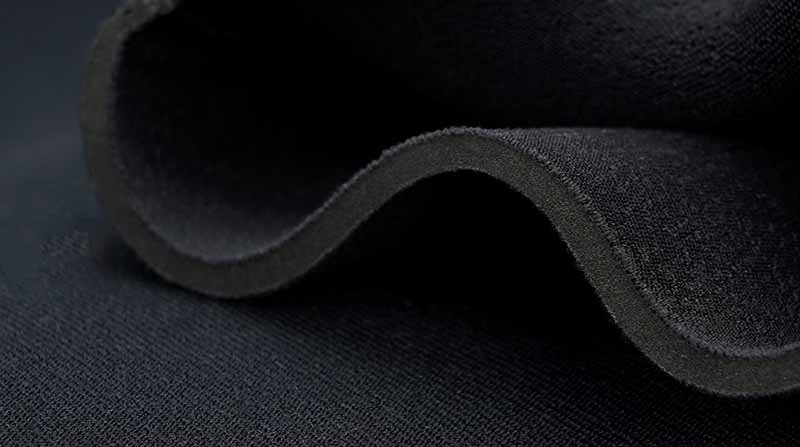
Wetsuit thickness directly affects warmth, flexibility, and buoyancy. Thicker neoprene (5–7 mm) retains more heat but limits movement, while thinner suits (1–3 mm) offer freedom in warmer waters. Professional manufacturers balance these factors by combining multiple thickness zones—such as 5 mm on the torso and 3 mm on arms—for optimal comfort, energy efficiency, and performance across various temperatures and activities.
The Science of Thickness and Heat Retention
A wetsuit’s job is to slow down heat loss.
Water conducts heat away from the body roughly 25 times faster than air, so even a few minutes of exposure can chill muscles and slow reflexes. The neoprene foam’s micro-cell structure—filled with nitrogen gas—acts as insulation by reducing heat transfer.
But thickness is only one side of the story.
The trick is finding the sweet spot between warmth and movement. Thicker neoprene means more trapped air (better insulation) but less flexibility. That’s why advanced wetsuits use variable thickness: thicker where you need protection, thinner where you need motion.
| Body Area | Typical Thickness (mm) | Purpose |
|---|---|---|
| Torso | 4–6 mm | Core warmth & buoyancy |
| Arms | 2–3 mm | Shoulder mobility |
| Legs | 3–4 mm | Balance between propulsion & insulation |
| Joints (knees/elbows) | 2–3 mm | Flexibility & comfort |
This zoned construction is what allows divers to move gracefully underwater and surfers to paddle freely without losing heat.
Finding the Balance: Warmth vs. Mobility
Every activity has its comfort zone. A diver who stays still in cold water needs more insulation than a surfer constantly in motion.
Professional manufacturers use thermal mapping and motion pattern analysis to determine where thickness should increase or taper.
- Warm-Water Use (≥75°F): 1–2 mm suits or even thin neoprene tops for sun and rash protection.
- Moderate Waters (60–75°F): 3/2 mm or 4/3 mm suits—standard for surfing and snorkeling.
- Cold Waters (45–60°F): 5/4 mm or 6/5 mm semi-dry suits, sometimes with integrated hoods.
- Extreme Environments (≤45°F): 7 mm or dry suits for maximum insulation and compression resistance.
| Water Temperature (°F) | Recommended Thickness (mm) | Common Use |
|---|---|---|
| 80+ | 1–2 | Tropical surfing, swimming |
| 70–79 | 2–3 | Warm-water diving, paddleboarding |
| 60–69 | 3–4 | General surfing, sailing |
| 50–59 | 4–5 | Cold-water diving, rescue |
| 40–49 | 6–7 | Deep or polar diving |
The modern buyer expects these distinctions to be precise.
That’s why factories like Szoneier calibrate material specifications digitally—ensuring that a “3/2 mm” suit actually performs like one in both compression and flexibility testing.
Compression Resistance: The Hidden Variable
Thickness at surface level doesn’t tell the full story underwater.
As divers descend, pressure compresses the neoprene, reducing its thickness—and therefore insulation. A 5 mm neoprene suit might shrink to 3.5 mm at 100 ft depth. This is where material quality becomes critical.
High-density SBR composites and closed-cell CR foams resist compression better than low-density neoprene. Factories often conduct ASTM D412 tensile and D395 compression tests to confirm performance.
| Material Type | Compression Loss @100 ft Depth | Thermal Retention (%) |
|---|---|---|
| High-Density SBR Composite | ~25% | 90% |
| Standard CR Neoprene | ~30% | 85% |
| Low-Density Foam Blend | ~40% | 70% |
This difference might seem small, but in long dives, a 15–20% loss in insulation can mean serious discomfort.
That’s why quality testing during OEM production isn’t optional—it’s an engineering necessity.
Buoyancy and Energy Efficiency
Wetsuit thickness also affects buoyancy, which directly impacts swimming performance. Thicker suits make a person float higher, improving efficiency for triathletes but complicating deep diving.
To compensate, pro divers use weighted belts, while swimmers use strategically tapered panels for balance.
High-end wetsuits even integrate variable buoyancy design—using thinner panels on the lower body to align posture in the water.
This small detail can improve race-time efficiency by 2–3%, according to Triathlon Performance Analytics (2024).
Flexibility: Where Engineering Meets Ergonomics
Neoprene thickness alone doesn’t determine flexibility—foam cell size, lamination method, and pattern layout all matter.
For example:
- Limestone neoprene has a finer cell structure, offering natural stretch even at higher densities.
- SBR-CR hybrids allow excellent seam bonding for tight, durable flexibility.
- Fabric choice—nylon vs. Lycra vs. spandex—affects recovery rate after stretching.
Professional manufacturers measure flexibility using tensile elongation (%) and recovery rate (%). The ideal range for wetsuits is:
- Elongation at break: ≥450%
- Recovery after stretch: ≥90%
When the neoprene returns smoothly to its shape, users experience less fatigue and longer gear life.
How Manufacturers Calibrate Thickness
For OEM buyers, this part matters most.
Factories don’t just “cut foam”; they fine-tune it.
At Szoneier, for instance, each production batch is tested for:
- Foam density (kg/m³) to ensure buoyancy consistency.
- Thickness accuracy within ±0.1 mm tolerance.
- Compression stability under simulated pressure.
- Thermal response during accelerated aging tests.
Digital flatbed cutters and patterning software like Gerber or Lectra allow multi-thickness mapping on a single suit—giving each model its own “thermal fingerprint.”
That’s why professional OEM clients often provide detailed specs (e.g., torso: 5 mm SBR/CR; sleeves: 3 mm; legs: 4 mm; lined interior). The more detailed the input, the more precise the performance.
How to Customize Wetsuits
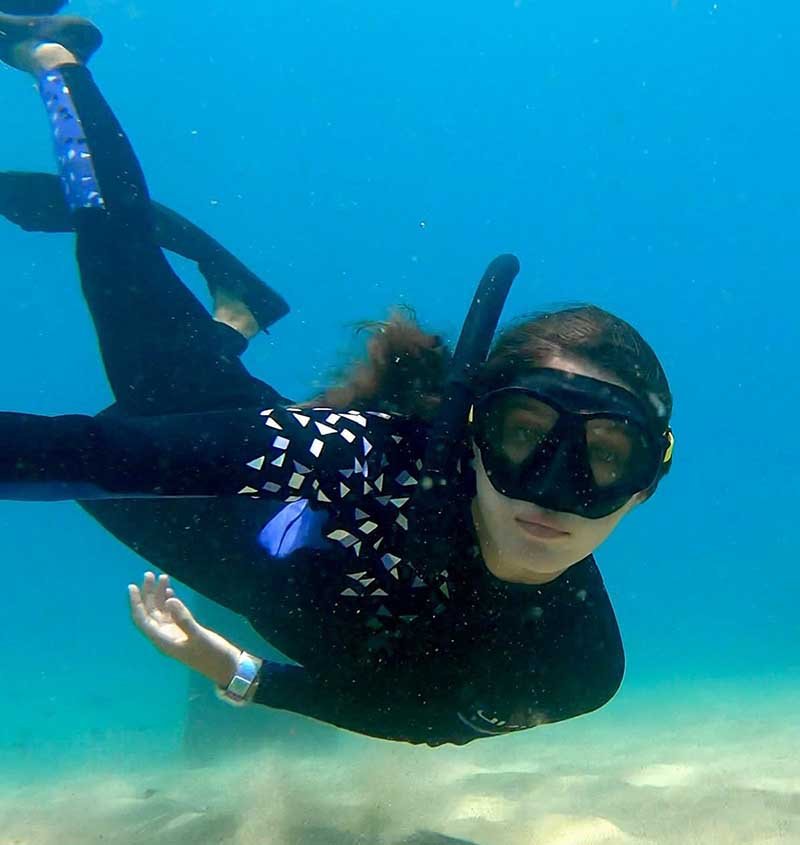
Custom wetsuit manufacturing involves tailoring material thickness, color, logo design, and fit to match a brand’s needs. OEM/ODM factories handle every stage — from pattern development and neoprene selection to logo printing, stitching, and quality testing. Professional suppliers like Szoneier offer free design support, low MOQs, and private label options, enabling small brands and high-end clients to launch customized wetsuits efficiently and cost-effectively.
The Modern Customization Landscape
The wetsuit industry has shifted dramatically over the last decade.
Once reserved for elite sports brands, custom wetsuit production is now accessible to startups, niche labels, and professional retailers thanks to advanced manufacturing in China.
Factories like Szoneier, with over 18 years of neoprene experience, have made OEM/ODM customization not just possible but practical. Small-batch orders, quick sampling, and flexible private labeling now allow any brand to launch its own wetsuit line without investing in a full-scale production facility.
Customization today isn’t just about logo printing. It’s a complete design process involving ergonomics, aesthetics, and performance engineering — all working together to reflect a brand’s identity and target market.
1. Design & Consultation Phase
Every successful wetsuit line begins with communication.
Manufacturers typically start with a technical consultation, where buyers share details such as:
- Target user (diver, surfer, triathlete, etc.)
- Water temperature range
- Thickness preferences (e.g., 3/2mm or 5/4mm)
- Desired colorways or brand palette
- Functional needs (zippers, knee pads, linings, etc.)
Factories then translate these requirements into 3D patterns or mockups.
At Szoneier, CAD-based patterning ensures each panel aligns perfectly with the user’s body shape, minimizing drag and improving comfort.
Clients can also send reference samples or style sketches — common for private labels trying to match existing market trends.
2. Material Selection: Beyond Neoprene
While neoprene is the heart of every wetsuit, there are many variants to choose from.
Each type affects flexibility, cost, and sustainability.
| Material Type | Key Benefits | Typical Use |
|---|---|---|
| CR Neoprene | Premium insulation & durability | High-end diving & surfing suits |
| SBR Composite | Strong adhesion & flexibility | Mid-range wetsuits, OEM projects |
| Limestone Neoprene | Eco-friendly & light | Sustainable collections |
| Recycled Neoprene Blends | Reduced carbon footprint | Green-focused brands |
Manufacturers may also customize inner and outer linings, such as:
- Thermal fleece linings for cold water
- Titanium or infrared coatings for heat reflection
- Smooth-skin outer surfaces for low drag
- Double-lined nylon for durability and color flexibility
The goal is to achieve balance — premium performance within your brand’s pricing strategy.
3. Logo & Branding Techniques
A wetsuit isn’t just functional gear — it’s a statement of brand identity.
That’s why logo application methods are critical to how customers perceive quality.
| Logo Method | Look & Feel | Cost Range (USD per logo) | Best For |
|---|---|---|---|
| Silkscreen Printing | Bright, simple, durable | $0.20–$0.50 | Entry-level logos |
| Embossed/Raised Printing | 3D texture, premium feel | $0.50–$1.20 | High-end branding |
| Heat Transfer | Smooth, flat, vivid | $0.40–$0.80 | Sports & lifestyle suits |
| Sublimation | Full-color photo effects | $0.60–$1.50 | Graphic designs |
| Gold Foil Printing | Metallic finish, luxury look | $0.80–$1.80 | Premium/private label |
| Embroidery Patch | Textured, vintage style | $1.00–$2.50 | Heritage or fashion lines |
Factories like Szoneier offer free design mockups and logo testing before mass production — ensuring color accuracy, adhesion strength, and long-term wash resistance.
4. Pattern Cutting & Sewing
Precision is everything in wetsuit construction.
Modern OEM workshops use computer-controlled cutting machines that maintain ±0.1 mm accuracy.
During sewing, key details like stitch type, thread density, and seam reinforcement define product longevity.
Common options include:
- Glued & Blindstitched (GBS) for watertight seams
- Flatlock stitching for flexible warm-water suits
- Overlock stitching for entry-level suits
Some premium lines also use liquid-seal taping or double taping for zero-leak performance.
Each stitch reflects both craftsmanship and technology — a small detail customers can feel when they wear the product.
5. Prototyping & Sampling
Sampling is where ideas become tangible.
Factories typically deliver samples within 7–15 days after design confirmation.
Szoneier offers:
- Free sample consultation
- Quick turnaround on first prototypes
- Video and photo updates during sample development
This transparency helps international buyers evaluate fit, elasticity, and finishing before finalizing mass production.
Tip: Always review samples under real conditions — stretch them, soak them, and inspect seams closely. This ensures alignment between your expectations and the factory’s technical output.
6. Quality Control & Certifications
Professional OEM/ODM factories follow international testing protocols to ensure reliability.
Typical checkpoints include:
- Tensile strength testing (ASTM D412)
- Peel adhesion testing (GB/T 2790)
- Saltwater aging tests
- Visual seam inspection
- Dimensional accuracy after heat press
For brands targeting premium markets, certification is crucial. Many suppliers, including Szoneier, can provide compliance with REACH, RoHS, and OEKO-TEX® Standard 100, confirming material safety and environmental responsibility.
7. Packaging & Private Label Services
Once production is approved, attention turns to packaging — an often-overlooked part of brand storytelling.
Options include:
- Custom polybags or zip pouches
- Hangtags with QR codes or size charts
- Branded boxes for e-commerce
- FBA-ready barcoded packaging for Amazon sellers
Private labeling services streamline the process — you simply provide your logo, SKU list, and region-specific packaging instructions, and the factory delivers retail-ready goods directly to your warehouse or fulfillment center.
8. Why OEM/ODM with Szoneier Works
The difference between a good supplier and a long-term partner lies in reliability.
Szoneier’s integrated system combines material R&D, in-house lamination, and automated stitching lines to guarantee:
- 100% quality assurance
- Low minimum order quantities
- Free design and logo consultation
- Fast sampling and short lead times
- Global logistics support for small and large buyers alike
Whether you’re building your first wetsuit collection or scaling production for a global brand, having an experienced manufacturer ensures smoother workflows and consistent quality — season after season.
FAQ: Common Wetsuit Questions

Wetsuit buyers often ask about proper fit, care, durability, and customization. A wetsuit should feel snug without restricting movement, last 3–5 years with correct care, and be rinsed after each use to prevent salt or chlorine damage. Custom manufacturers like Szoneier offer design flexibility in thickness, materials, and logos—helping brands create performance-ready wetsuits for every climate and activity.
1. How Should a Wetsuit Fit?
A wetsuit should feel snug but not restrictive. The ideal fit eliminates large air pockets yet allows comfortable breathing and shoulder movement. When dry, it may feel slightly tight—once wet, it naturally loosens about 10–15%.
Fit is crucial for thermal performance. A suit that’s too loose lets cold water “flush” through, reducing warmth. Conversely, an overly tight suit restricts circulation and flexibility.
Professional factories use 3D body-mapping CAD systems to adjust curves and joints. For private label clients, brands can choose from Asian, European, or American size templates, ensuring consistency across regions.
Pro Tip: Always test fit by stretching your arms overhead and squatting down. If the fabric doesn’t pull painfully or form deep creases, it’s likely the right size.
2. How Long Does a Wetsuit Last?
A high-quality wetsuit typically lasts 3–5 years under normal use, but lifespan depends on material grade, care, and exposure conditions.
| Usage Frequency | Expected Lifespan | Recommended Material |
|---|---|---|
| Occasional (1–2 times/month) | 4–5 years | Standard CR or SBR composite |
| Regular (2–3 times/week) | 2–3 years | Premium CR neoprene |
| Professional (daily use) | 1–2 years | High-density SBR or limestone neoprene |
Longevity is primarily determined by foam density, lamination quality, and UV resistance. Lower-grade neoprene may lose elasticity faster due to compression fatigue.
Factories like Szoneier use anti-aging accelerators during foaming and conduct thermal-aging tests at 70°C for 72 hours to simulate wear.
Proper care also makes a difference:
- Rinse thoroughly after each use (avoid hot water).
- Dry flat in the shade — never hang by the shoulders.
- Store loosely folded to avoid creasing.
A well-maintained wetsuit isn’t disposable — it’s an investment that can serve multiple seasons of performance.
3. What Is the Difference Between a Wetsuit and a Drysuit?
The main difference lies in how they insulate the body.
- Wetsuits trap a thin layer of water and rely on body heat.
- Drysuits seal out water completely using waterproof zippers and cuffs, keeping the wearer dry.
Wetsuits are preferred for surfing, snorkeling, triathlons, and recreational diving due to their lightweight flexibility.
Drysuits suit industrial, military, or Arctic diving, where full dryness and insulation are necessary.
From a buyer’s standpoint, wetsuits are easier to produce and maintain, offering higher ROI for retail or e-commerce brands.
Most global surf brands stock 80–90% wetsuits and only 10–20% drysuits due to volume demand and affordability.
4. How Do You Clean and Maintain a Wetsuit?
Rinse in fresh water after every use, avoid direct sunlight, and wash occasionally with wetsuit shampoo or mild detergent.
Neoprene is durable but sensitive to heat, chlorine, and oil. Harsh detergents or machine washing can damage the foam’s nitrogen cells.
Here’s a quick care checklist for your customers or resellers:
| Task | Frequency | Purpose |
|---|---|---|
| Rinse with clean water | After every use | Removes salt, sand, and bacteria |
| Hand-wash with wetsuit cleaner | Monthly | Keeps neoprene supple |
| Air dry in shade | Always | Prevents UV damage |
| Store flat or on wide hanger | Long term | Avoids shoulder stretching |
OEM buyers often request care instruction tags or inserts to educate end-users — a simple but professional touch that builds brand trust and reduces returns.
5. Can Wetsuits Be Customized for Different Sports?
Yes — modern wetsuits are highly sport-specific, and customization allows each activity to have its own balance of warmth, stretch, and design.
| Sport/Use | Preferred Features |
|---|---|
| Surfing | High-stretch panels, seamless underarms |
| Diving | Thicker torso insulation, taped seams |
| Triathlon | Smooth-skin exterior, buoyant chest area |
| Swimming | Ultra-light, minimal seams |
| Paddleboarding | Flexible shoulders, UV-resistant outer layer |
Each sport creates different physical demands. For example, triathletes need quick transitions — so zippers, wrist openings, and coatings differ.
Factories like Szoneier tailor-cut patterns and adjust fabric types based on intended movement range.
Buyers can even mix materials — e.g., 5mm CR core + 2mm SBR sleeves — for maximum comfort.
This hybrid approach gives brands creative freedom to market unique, purpose-built designs.
6. Why Do Wetsuits Smell and How Can You Remove Odor?
That “wet neoprene” smell comes from bacteria growth in trapped moisture.
The fix? Rinse thoroughly, hang dry in a ventilated space, and use specialized neoprene deodorizer sprays if needed.
During OEM production, some suppliers pre-treat neoprene with anti-microbial coatings. Silver-ion or bamboo-charcoal linings help prevent odor buildup, making them ideal for rental fleets or frequent-use markets.
End-users should avoid storing wetsuits inside airtight bags while damp — one of the most common causes of persistent odor complaints.
7. Can You Add Logos or Branding on Any Area of the Wetsuit?
Yes — most areas can carry logos, but placement depends on material thickness, seam layout, and panel tension.
Popular branding zones include:
- Chest or shoulder (high visibility)
- Back panel (for surf schools and brands)
- Wrist or ankle zones (for product ID or sizing)
- Inner label area (private logo or SKU)
Professional suppliers always test logo adhesion on real neoprene samples before production, ensuring durability during stretching, salt exposure, and washing cycles.
8. What Certifications or Standards Should Buyers Look For?
Reliable suppliers should comply with at least one of the following:
- OEKO-TEX® Standard 100 (skin-safe materials)
- REACH Regulation (EU) (chemical safety)
- RoHS Directive (restricted substances)
- ISO 9001:2015 (quality management)
These certifications guarantee not only safety but also traceability — something more Western buyers are now demanding as part of ESG (Environmental, Social, and Governance) sourcing.
9. How Long Does It Take to Produce a Custom Wetsuit Order?
Production timelines vary depending on design complexity and order size, but professional OEM factories typically follow this schedule:
| Stage | Duration |
|---|---|
| Sample Development | 7–15 days |
| Sample Revision (if needed) | 5–7 days |
| Mass Production | 25–35 days |
| Quality Inspection + Packing | 5 days |
| Shipping (by sea or air) | 7–30 days |
Buyers can save time by finalizing logos, packaging specs, and sizing charts early in the process.
Szoneier’s digital workflow shortens total lead time by 15–20%, offering reliable production even during seasonal surges.
2026 Trends & Buying Tips
In 2026, wetsuit trends focus on sustainability, intelligent materials, and ergonomic precision. Buyers are shifting toward eco-friendly neoprene alternatives, body-mapped 3D fits, and AI-assisted customization. For private labels and OEM brands, success will depend on balancing innovation with cost efficiency — choosing suppliers that integrate advanced R&D, ethical sourcing, and flexible low-MOQ production to meet fast-changing market demands.
1. Sustainability Isn’t a Buzzword — It’s a Buying Standard
The global wetsuit market is projected to exceed USD 1.8 billion by 2026, with sustainability listed as a top three purchasing factor among younger consumers (Euromonitor, 2025).
Eco-conscious design has evolved from marketing rhetoric into a tangible requirement — especially for brands targeting the U.S., EU, and Japanese markets.
Key material innovations driving this shift include:
- Limestone neoprene replacing petroleum-based CR
- Bio-based SBR (from sugarcane ethanol) with 40% lower carbon footprint
- Recycled nylon and polyester linings
- Water-based glues replacing solvent adhesives
| Eco-Material | Environmental Benefit | Performance Retention |
|---|---|---|
| Bio-based SBR | 40% carbon footprint reduction | 95% tensile strength vs. CR |
| Recycled Nylon Fabric | Reduces landfill waste | 100% comparable durability |
| Water-based Adhesives | VOC-free production | Equal bond strength |
| Limestone Neoprene | No crude oil use | Lightweight, high density |
Factories like Szoneier integrate these materials directly into OEM workflows — meaning small and mid-sized buyers can launch sustainable collections without inflated costs.
Sustainability today isn’t just ethical — it’s profitable. Products labeled “eco-neoprene” command price premiums of up to 25% in Western retail markets.
2. AI and 3D Technology Transforming Design
Designing wetsuits used to rely heavily on manual patterning and physical prototypes. Now, AI-assisted fit modeling and 3D virtual sampling are revolutionizing the workflow.
These tools simulate real-body dynamics, stretch ratios, and seam tension, drastically cutting lead times and material waste.
At Szoneier and other leading factories, 3D systems like Gerber AccuMark or CLO3D can generate:
- Instant virtual fitting feedback
- 360° motion simulation
- Digital thickness mapping for thermal zones
This not only speeds up sampling but also helps brands visualize how their designs look on multiple body types before production begins.
For startups, this technology eliminates costly re-sampling — making OEM collaboration smoother, faster, and more predictable.
3. Smart Materials & Performance Integration
2026 will bring a new generation of intelligent wetsuit materials that go beyond insulation.
The most exciting innovations under development include:
- Graphene-infused linings for faster heat transfer
- Phase-change microcapsules that regulate temperature dynamically
- Embedded conductive fibers for real-time biometric monitoring
- Self-healing coatings to repair micro-tears
| Technology | Function | Expected Commercialization |
|---|---|---|
| Graphene Thermal Layers | Even heat distribution | 2026–2027 |
| Phase-Change Microcapsules | Adapts to body temperature | 2025–2026 |
| Conductive Fibers | Tracks body temp & heart rate | 2026–2028 |
| Self-Healing Coatings | Extends fabric lifespan | 2027–2029 |
While these technologies are still emerging, they signal a future where wetsuits serve not only as insulation tools but as smart performance gear — connecting human endurance with digital monitoring.
4. Design Personalization Meets Data Analytics
Brands used to design for “average bodies.” That’s changing.
With global data collection and digital retail tools, 2026’s wetsuit brands will increasingly offer personalized fit experiences based on demographic and biometric data.
Imagine:
- A brand using region-specific customer sizing data to pre-optimize patterns.
- Online buyers scanning their body via smartphone apps for perfect size recommendations.
- Factories adjusting neoprene stretch profiles per region — e.g., more torso space for European builds, narrower shoulders for Asian fits.
This evolution bridges digital retail and real-world production.
It also reinforces the importance of working with manufacturers who can adapt quickly — updating patterns, grading systems, and molds as new fit data emerges.
5. Shifting Buyer Expectations: Function + Story
Modern buyers don’t just want gear — they want meaning.
In 2026, purchase decisions are driven by storytelling, authenticity, and transparency.
That’s why OEM brands are investing more in packaging, brand visuals, and value communication.
Strong storytelling includes:
- Highlighting ethical sourcing (“Made with Bio-Neoprene & Recycled Nylon”)
- Emphasizing design origin (“Engineered in California, Crafted in Shenzhen”)
- Offering post-purchase guidance (care cards, repair support, recycling programs)
Factories supporting these narratives help buyers gain stronger shelf appeal and consumer trust — critical for retail conversion in the competitive outdoor and sportswear sectors.
6. OEM/ODM Buyers’ Checklist for 2026
To stay competitive in the next two years, private-label buyers should focus on speed, flexibility, and transparency.
| Key Factor | Why It Matters | How to Achieve It |
|---|---|---|
| Shorter Lead Times | Keeps pace with trend cycles | Use digital prototyping and local sourcing |
| Sustainability Compliance | Essential for EU/US retail entry | Choose REACH & OEKO-TEX® certified suppliers |
| Low MOQ Options | Reduces inventory risk | Partner with factories offering flexible production |
| Brand Differentiation | Builds recognition | Invest in custom logos and packaging |
| Technical Expertise | Prevents production issues | Work with R&D-capable manufacturers |
7. Global Market Opportunities
According to Allied Market Research (2025), Asia-Pacific wetsuit exports will continue to grow by 6.2% CAGR, with China leading in OEM production and Vietnam, Thailand, and Taiwan expanding as secondary hubs.
European brands will increasingly source sustainable materials from Asia while maintaining design operations locally — a model known as “hybrid sourcing.”
This offers small-to-medium-sized importers a key opportunity: high-quality production at competitive cost without sacrificing brand positioning.
8. Strategic Advice for New and Growing Brands
If you’re launching or expanding a wetsuit line in 2026, consider these five best practices:
- Start with clear segmentation. Define your target user — recreational, professional, or eco-lifestyle.
- Prioritize material quality. Even small differences in foam density can change customer satisfaction.
- Invest in visual storytelling. Well-designed packaging and hangtags elevate perceived value.
- Work with factories offering in-house lamination. This ensures stable quality and faster sampling.
- Negotiate long-term partnerships, not short-term price wars. Reliability beats the cheapest quote.
Factories like Szoneier specialize in helping buyers through these phases — offering free consultation, material sampling, and design guidance before production even starts.
9. Looking Ahead — The Future of Wetsuit Innovation
By 2026 and beyond, we’ll see wetsuits that are smarter, lighter, and more sustainable.
Technological convergence — between materials science, AI, and user analytics — will redefine how these garments are made, used, and recycled.
Factories that merge data-driven production with ethical sourcing will dominate global supply chains.
That’s why buyers choosing long-term partners today are essentially choosing who will define their brand’s reputation tomorrow.
Conclusion — Build Your Future Collection with Confidence
The wetsuit market is no longer about copying what’s popular. It’s about building purpose-driven, high-performance products that align with the values of modern consumers.
Whether you’re designing eco-friendly surf suits, high-end diving gear, or promotional private-label collections, the path to success starts with a manufacturer who understands innovation and brand identity equally.
Szoneier stands ready to support you with:
- 18+ years of neoprene R&D and production experience
- Fully integrated OEM/ODM service
- Free design and sampling support
- Certified materials and sustainable production lines
- Flexible MOQs and global export expertise
Ready to create your custom wetsuit line?
Contact Szoneier today to discuss your design, logo, or material requirements — and turn your next idea into a market-ready product.

